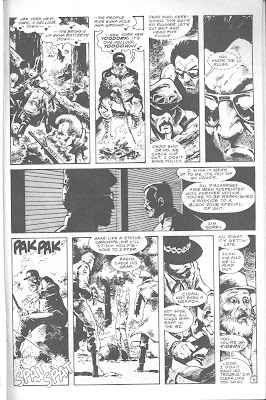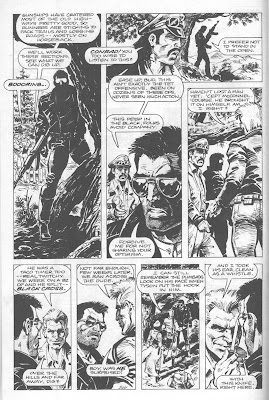by Esteban Maroto
IDW, February 2018
'Lovecraft: The Myth of Cthulhu' (80 pp) was published in hardcover by IDW in February 2018.
This book compiles three black-and-white comics Maroto first drew in 1982 for a commission from Spanish publisher Editorial Brugera, who was producing a series of illustrated novels.
Unfortunately, Editorial Brugera went out of business before the book was produced, and Maroto's artwork was never returned to him. In 1985 the comics appeared in the back pages of the Spanish children's magazine Capitan Trueno.
But it was not until Moreno found some copies of the artwork among his personal items that he resolved to have the series republished as an 'official' production. So, this English-language edition of his work represents the version that Maroto has approved.
'Lovecraft: The Myth of Cthulhu' features Maroto's interpretation of three classic Lovecraft takes: 'The Nameless City', 'The Festival', and 'The Call of Cthulhu'. These are done in a 'European' style, which is to say, as illustrations accompanied by narrative text boxes; there are no speech balloons or sound effects.
Maroto is in top form for each of these stories. His artwork is a carefully crafted mix of ornate penmanship, combined with the imaginative approach to panel composition that characterizes the work of the great Spanish comic book artists of the Warren magazine era and its aftermath.
For example, Maroto's draftsmanship in the initial pages of 'The Festival' does an exceptional job of giving the story a uniquely 'existential' atmosphere, as the protagonist makes his way through the empty streets of a Rhode Island seacoast town in Winter:
'The Call of Cthulhu' necessarily calls for the artist to render otherwordly monsters and Maroto does an exceptional job here as well.
I find Maroto's treatment of Lovecraft to be markedly superior to 'The Fall of Cthulhu' and 'Cthulhu Tales', the cartoony incarnations of the Mythos churned out by Boom. It's also a lot more approachable than the more recent, over-written treatments of the topic produced by Alan Moore ('Necronomicon', 'Providence').
Summing up, if you're a fan of the Spanish comic book artists of the Warren magazine era, a fan of H. P. Lovecraft, or just someone who appreciates good graphic art, then picking up 'Lovecraft: The Myth of Cthulhu' is a worthy investment.

























































.jpg)















